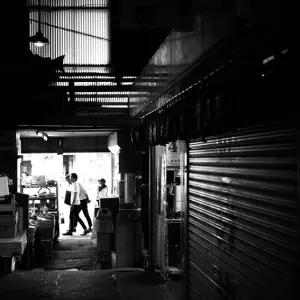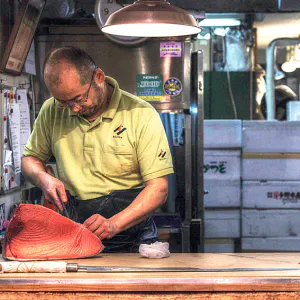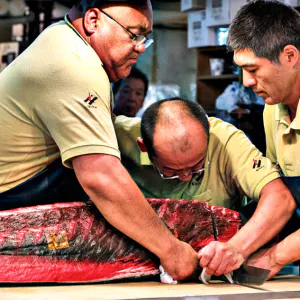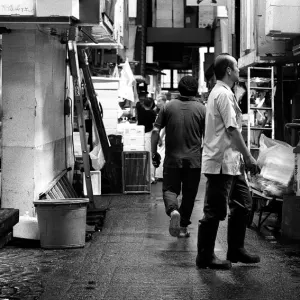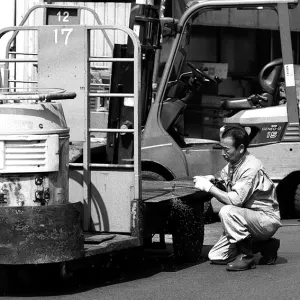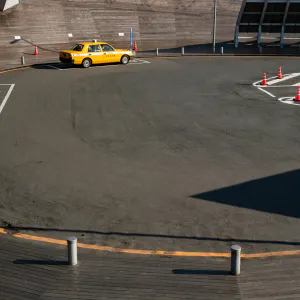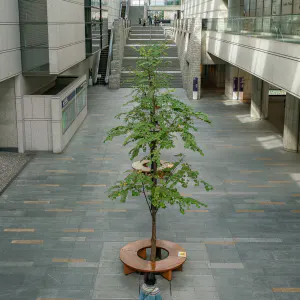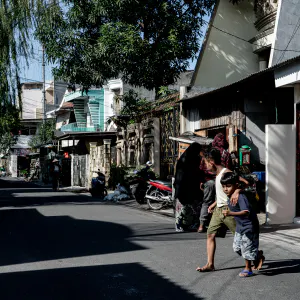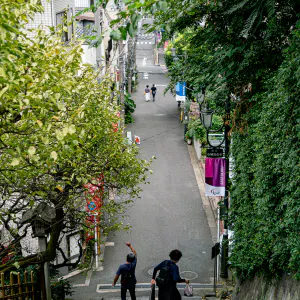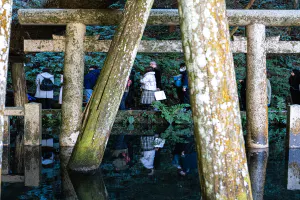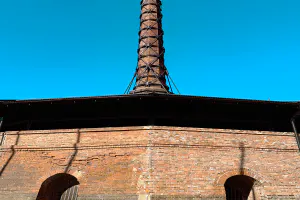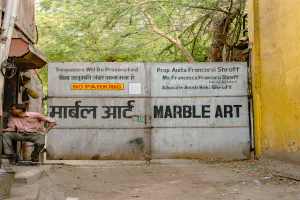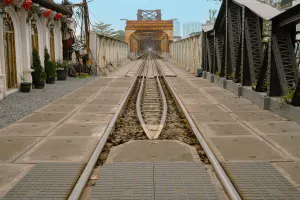The entrance to Tsukiji Hongan-ji Temple was dimly lit, like a device to give the main hall a sense of majesty
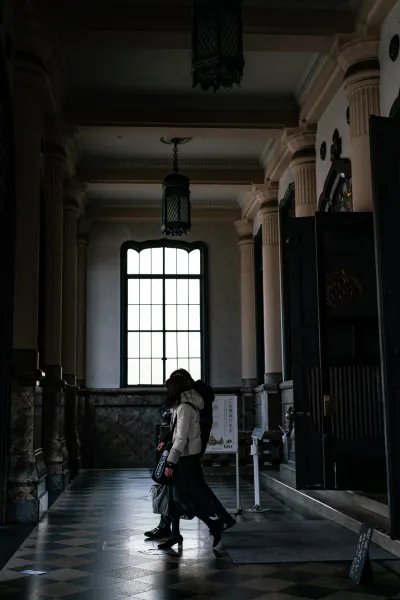
When I think of Buddhist temples in Japan, I have a strong image of wooden structures, as represented by Todai-ji Temple in Nara and Nishi Hongan-ji and Higashi Hongan-ji temples in Kyoto. While there are temples like the main hall of the Senso-ji temple that pretend to be made of wood even though it is actually made of reinforced concrete, the Tsukiji Hongan-ji temple is graceful. The main hall of Tsukiji Hongan-ji Temple has no trace of wood. Built in 1934, there is nothing wooden about the main building, which is made of reinforced concrete and has an appearance reminiscent of stone Hindu temples in India and Nepal.
Tsukiji Hongan-ji was designed by Chuta Ito in the motif of ancient Indian style. He was a rather unusual architect who traveled from China to India and Turkey to study in Asia to discover the roots of Japanese architecture at a time when it was common practice to study in the West. I had assumed that such a person would have designed such a unique style of Buddhist temple, but it seems that it is not that simple.
Even if I look at other buildings designed by Chuta Ito, none of them exudes the ancient Indian style as much as Tsukiji Hongan-ji. The Yushukan at Yasukuni Jinja Shrine and Okura-Shukokan buildings do not have an Indian feel to them, nor do any of the other Buddhist temples he designed remind me of India. Given this, there must have been a reason why Tsukiji Hongan-ji had to be designed in the ancient Indian style. I don't know what it was, though.
| Feb 2022 PEOPLE TOKYO | |
| DIMNESS ENTRANCE TEMPLE TSUKIJI |
PHOTO DATA
No
12175
Shooting Date
Dec 2021
Posted On
February 13, 2022
Modified On
August 16, 2023
Place
Tsukiji, Tokyo
Genre
Street Photography
Camera
SONY ALPHA 7R II
Lens
ZEISS LOXIA 2/35

